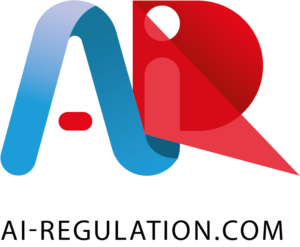In October 2022, the White House released its white paper on AI. The ‘Blueprint for an AI Bill of Rights. Making Automated Systems Work for the American People’ intends “to guide the design, use, and deployment of automated systems to protect the American public in the age of artificial intelligence”. The framework was published by the White House Office of Science and Technology Policy, which is responsible for providing the President and his Executive Office with advice on numerous topics, including technology and national security.
The AI Bill of Rights aims to “support the development of policies and practices that protect civil rights and promote democratic values in the building, deployment, and governance of automated systems”. It applies to automated systems that “have the potential to meaningfully impact the American public’s rights, opportunities or access to critical resources or services”. To this end, the white paper identifies the following five principles:
1° Safe and effective systems: This principle intends to protect individuals from “unsafe or ineffective” systems by promoting public consultations during the development of this technology to identify concerns, risks, and potential social impacts. It also promotes pre-deployment testing and ongoing monitoring of the systems once deployed.
2° Algorithmic Discrimination Protections: To avoid discriminatory activity, this principle proposes including proactive equity assessments in the design of the systems, using representative data, and protecting against proxies (“attributes that are highly correlated with demographic features”). This principle also provides that, where possible, an algorithmic impact assessment should be carried out and made public.
3° Data Privacy: This principle intends to promote principles such as privacy-by-design and “data-minimisation”. It aims to protect individuals’ privacy by limiting data processing only to a level that is strictly necessary and for the specific context it was collected. It also aims to enhance data protection and to protect a number of sectors and communities (e.g. education, housing, etc.) from unchecked surveillance.
4° Notice and explanation: This principle promotes transparency by ensuring that leading designers, developers, and deployers of automated systems provide clear information about the system, ‘when’ and ‘how’ it will be used, and its outcomes.
5° Human Alternatives, Consideration and Fallback: This principle concerns the ability to opt out from the automated system, and choose a human alternative where possible.
The blueprint includes a “technical companion” to help illustrate how the principles can be incorporated into policy and practice. The handbook includes detailed steps on how to incorporate the protections provided by the five principles into automated systems. Furthermore, it provides numerous examples of the type of systems that could have a negative impact on individuals and communities such as content moderation tools, predictive policing, real-time facial recognition, health risk assessments, wellness apps, credit scoring, criminal justice systems, and more.
However, the framework has several shortcomings that bring its effectiveness into question. First, the blueprint is a non-binding instrument, which means that the principles it contains are not mandatory requirements. Second, U.S. government policy will not be changed as a result of the framework, and nor will the U.S.’s position in international negotiations regarding AI systems. Third, the principles “are not intended to, and do not, prohibit or limit any lawful activity of a government agency, including law enforcement, national security or intelligence activities”.
The white paper is considered by some privacy and technology advocates to be a step forward in terms of raising awareness of the need for responsible AI while others consider it a “toothless” response to the issues at hand. Moreover, the decision to leave certain sectors such as law enforcement out of the framework has been criticised.
It is not clear yet whether AI will be regulated in a comprehensive manner in the U.S. or if the government will opt for a self-regulatory approach. The idea of self-regulation has been challenged more and more due to the impact social media has had on society. Given these issues, it is difficult to envision the AI Bill of Rights having a positive impact on the design, use, and deployment of AI automated systems.
SCJ

